SUMMARY
This is AI generated summarization, which may have errors. For context, always refer to the full article.
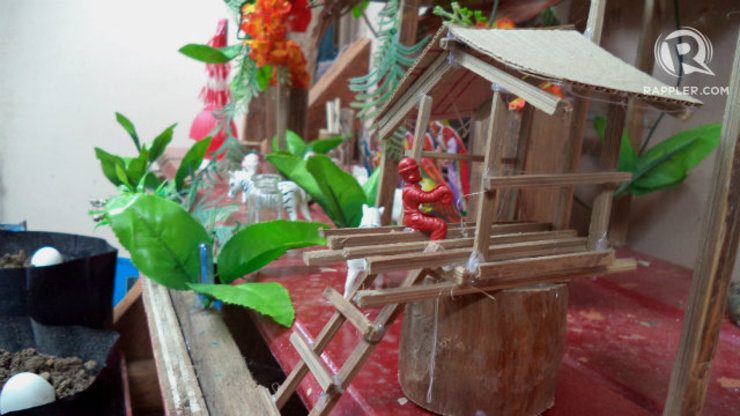
TACLOBAN, Philippines — He makes toys.
Not for a living, but for himself and his neighbors.
He made a small house made of scrap wood, bamboo, and carton board. He even bought a tiny plastic man to occupy the house.
He also made a small plastic boat, a flower vase, a mini-lantern, and a toy mushroom.
He is Rio Moralita, a Yolanda survivor in Tacloban City. From Barangay 31 or “Pampango,” he was moved to a bunkhouse located in Barangay Caibaan.
“‘Di ko na maalala kailan kami lumipat, ang bilis ng mga pangyayari (I don’t remember when we moved, everything happened so fast),” Rio said.
At 42, Rio is fond of creating things from scratch.
He lives in a small room with his wife, who was playing cards with friends while Rio tended to pots of sili (chili peppers).
“Walang magawa, kaya laro muna. Walang upuan, kaya sa lapag. Si Rio, mahilig ‘yan magbutingting, (There’s nothing to do, so we play. There are no chairs, so we’re sitting on the floor. Rio likes to tinker),” the wife said.
 His latest project – in preparation for Christmas – is a nativity set.
His latest project – in preparation for Christmas – is a nativity set.
He said that putting up Christmas lights in the bunkhouses is prohibited to avoid fire accidents sometimes caused by faulty wiring. To improvise, Rio made his own using a tiny bulb powered by his wristwatch’s battery.
He placed the bulb atop a scented candle and made it the nativity’s center piece. Unfortunately, the battery ran out of power and he ran out of cash to buy replacements.
Children often asks Rio to make crafts for them; other 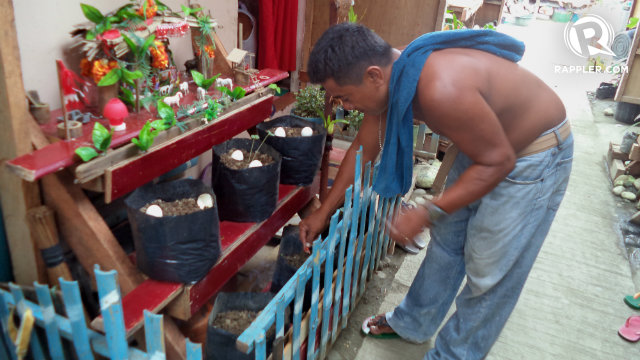 times, they bring him toys which he adds to his nativity set — which explains why a zebra is mixed with a flock of sheep.
times, they bring him toys which he adds to his nativity set — which explains why a zebra is mixed with a flock of sheep.
“Kahit kulang pera, namimili ako nito minsan. Para naman masaya (Even if money’s tight, I buy these sometimes. So that we’ll have fun),” he said as he pointed out the Christmas decorations which he starting putting up in October.
Rio wanted to make more toys, if only he had enough tools. He only has a glue gun; the rest of his materials, he finds on the streets or in trash bins.
“Itong glue gun, nasalba ko ito pagkatapos ng bagyo I managed to save this glue gun after the typhoon),” he said.
For Christmas, his wishes are quite simple — new glue sticks and a new job.
Rio sidelines as a tricycle driver, while his wife works as a laundrywoman. “Ang hirap maghanap ng trabaho. Pumupunta ako siyudad araw-araw, wala pa rin (It’s hard to find a job. I go to the city every day, but still nothing),” he shared.
Before Yolanda, Rio and his wife had a small business. They sold snacks like pork barbecue from their own home.
“Pero ngayon, wala (But now, we have nothing).”
After Christmas
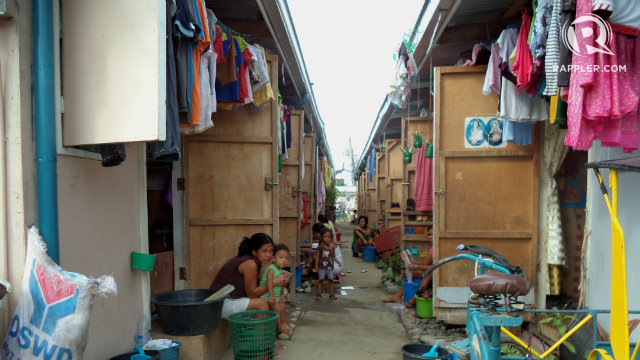
Rio is just one of the 2,273 Filipinos living in the “Caibaan Motocross Bunkhouse.”
The bunkhouses are built on land owned by the International Pharmaceutical Inc (IPI), a private company. The IPI agreed to lend the land to the local government of Tacloban, but only temporarily. The agreement was supposed to end in June 2014 but was extended until the end of this year.
What awaits the residents after Christmas? Nobody is sure, not even the authorities. There have been talks of relocation sites, but nothing has been made final — a sentiment echoed by different residents and barangay officials across Tacloban.
The first batch of families moved in by the end of January 2014; as of present, 530 families occupy the space. Most of them came from the Rizal Evacuation Center, the Leyte High Evacuation Center, the Astrodome Evacuation Center, and Barangay 88 – Tacloban’s worst hit village.
The Department of Public Works and Highways constructed the bunkhouses, which was criticized for its design.
The Camp Coordination and Camp Management (CCCM) visited the site in December 2013, before the residents moved in, and found that the shelters were not “raised as much as others,” possibly causing flooding problems. The CCCM also reported that it was a “high density site and had no space for dispersion and social activities.”
Meanwhile, the Department of Social Welfare and Development (DSWD) and the International Organization for Migration (IOM) work together in managing the bunkhouses and its beneficiaries. IOM also provides medical assistance and community lessons to the residents.
Other non-governmental organizations come in to provide different assistance, such as with hygiene and sanitation.
Concerns
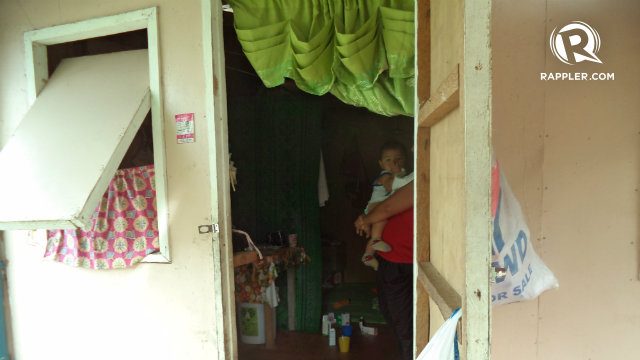
Several units away from Rio’s is Michelle Pagambunan’s.
“Lumipat kami dito March. Walang kuryente, nagkaroon around May (We moved here in March. There’s no electricity, we only had it around May),” Michelle said. The families were given emergency lights during that time.
Michelle stays at home with her 4 kids, while her husband works part-time in the kapitolyo. “Pamasahe pa lang niya, halos P50 na kada araw. Sakto lang suweldo mabuhay (His fare is almost P50/day. This salary is just enough to survive),” she said.
She added that the bunkhouse is far from the market, so they buy food from the talipapa (market) which is quite nearer.
While some families have small vegetable plots, others still feed their children junk food. More than 400 of the residents are children aged 5 and below — a critical period for mental and physical development. What they eat now can affect what they will be like in a couple of years.
Kids share only one child-friendly space, while over a thousand women share only one woman-friendly space.
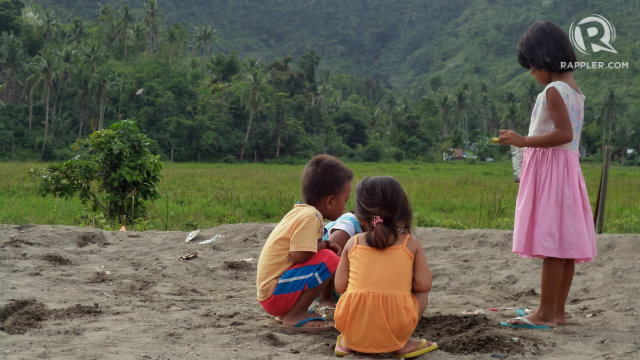
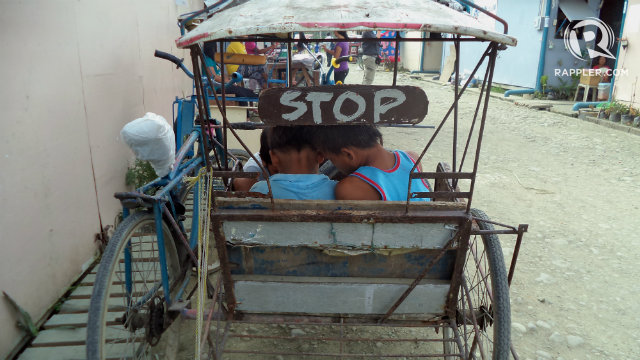
Some children do not have toys, so they play however way they can.
“Problema pa, malamok,” Michelle said. “At kung mainit, sobrang init sa loob. Kung malamig, sobrang lamig.” (Another problem is there are lots of mosquitos. And when it’s hot, it’s super hot inside. When it’s cold, it’s super cold)
Michelle also complained that water is quite problematic. “Mahina tubig (Water pressure is weak),” she said. Meanwhile, her neighbor, Haydee Dacuno said that certain parts of the compound can only access water at certain hours at night.
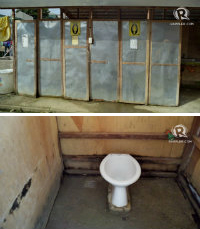 Over 2,000 residents share 100 toilets, 100 bathing cubicles, and 17 cooking areas — which does not use modern stoves, but wood or charcoal. But Michelle and Haydee were also thankful for receiving DSWD relief goods and for not having to pay anything during their stay in the bunkhouse.
Over 2,000 residents share 100 toilets, 100 bathing cubicles, and 17 cooking areas — which does not use modern stoves, but wood or charcoal. But Michelle and Haydee were also thankful for receiving DSWD relief goods and for not having to pay anything during their stay in the bunkhouse.
They wish, however, that before the new year comes, they can have clear answers as to where they will be heading next. (WATCH: Tour a Yolanda bunkhouse)
Until then, Rio keeps himself busy by filling his small room with recycled christmas decorations. – Rappler.com
For Rappler’s full coverage of the 1st anniversary of Super Typhoon Yolanda (Haiyan), go to this page.
Add a comment
How does this make you feel?
There are no comments yet. Add your comment to start the conversation.